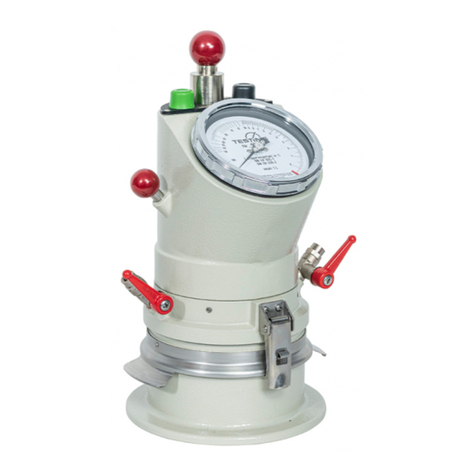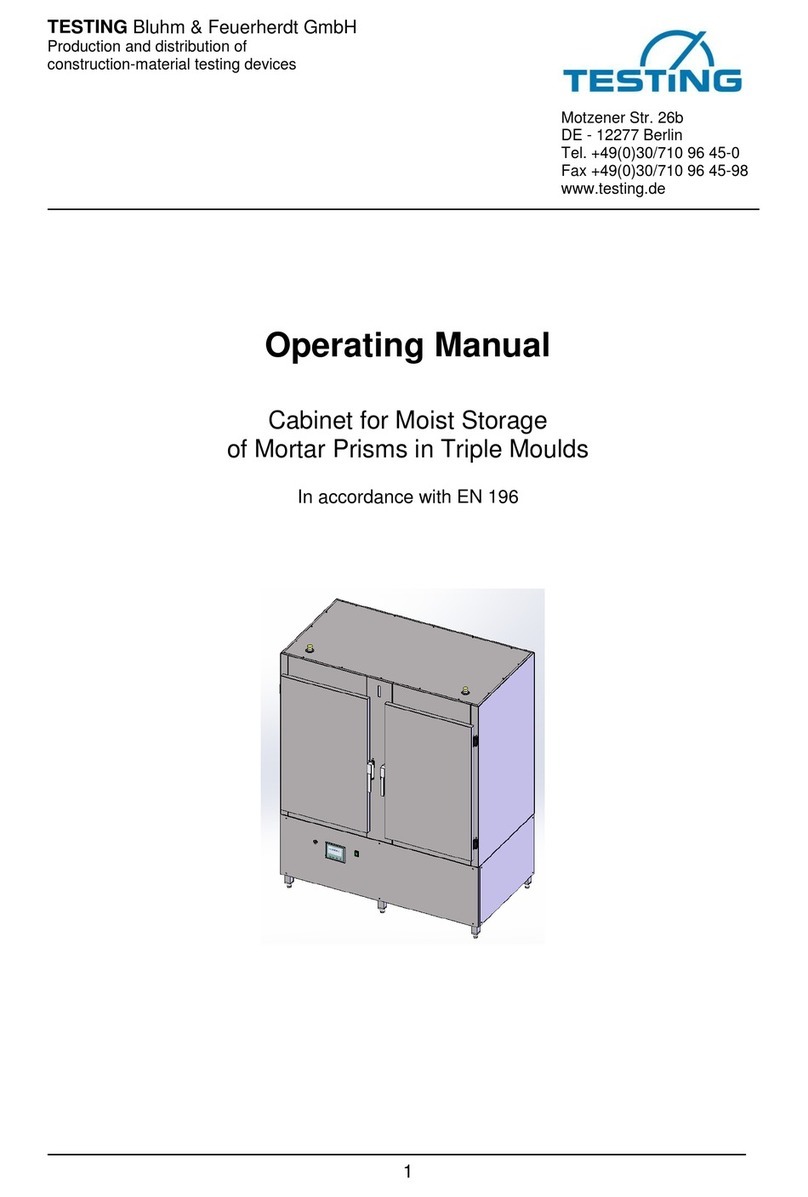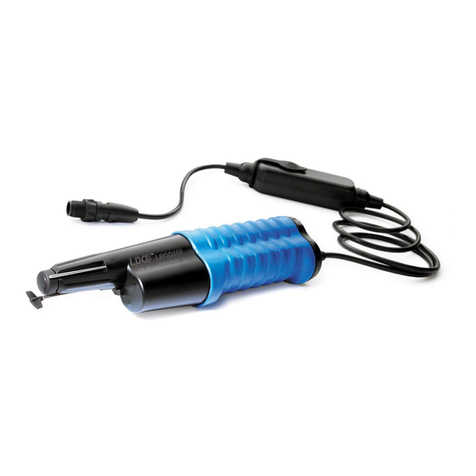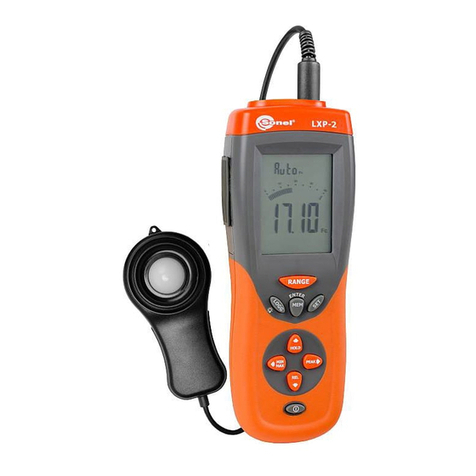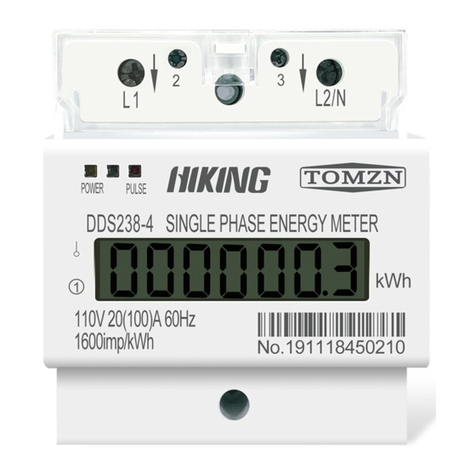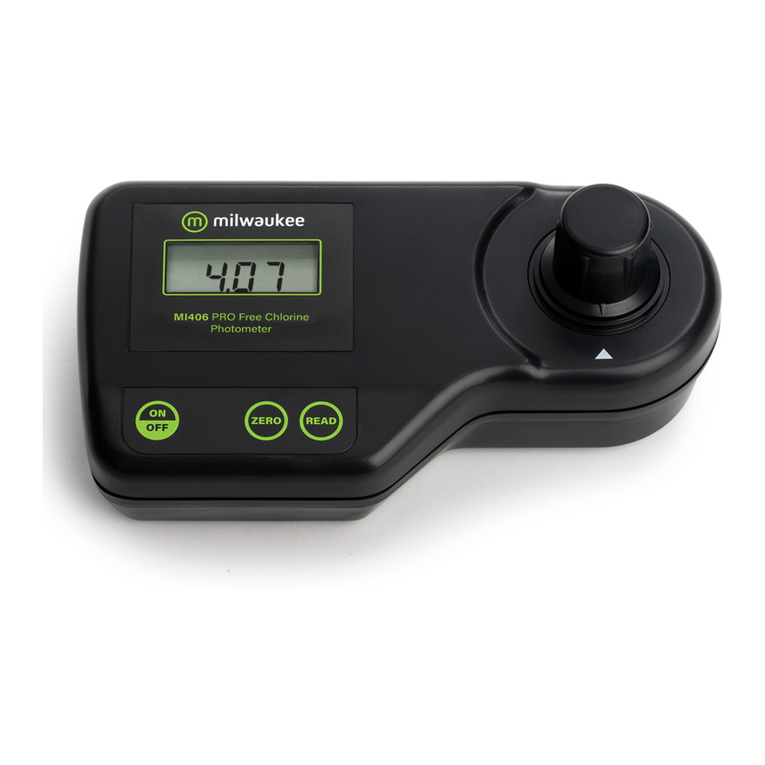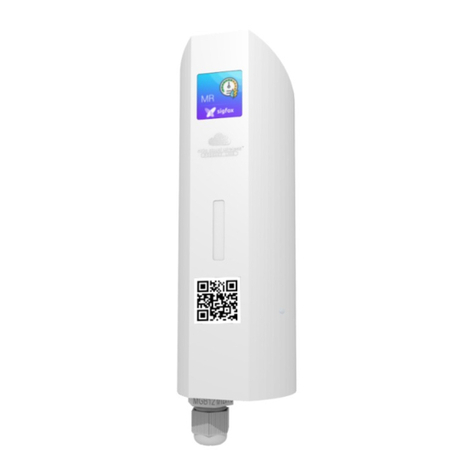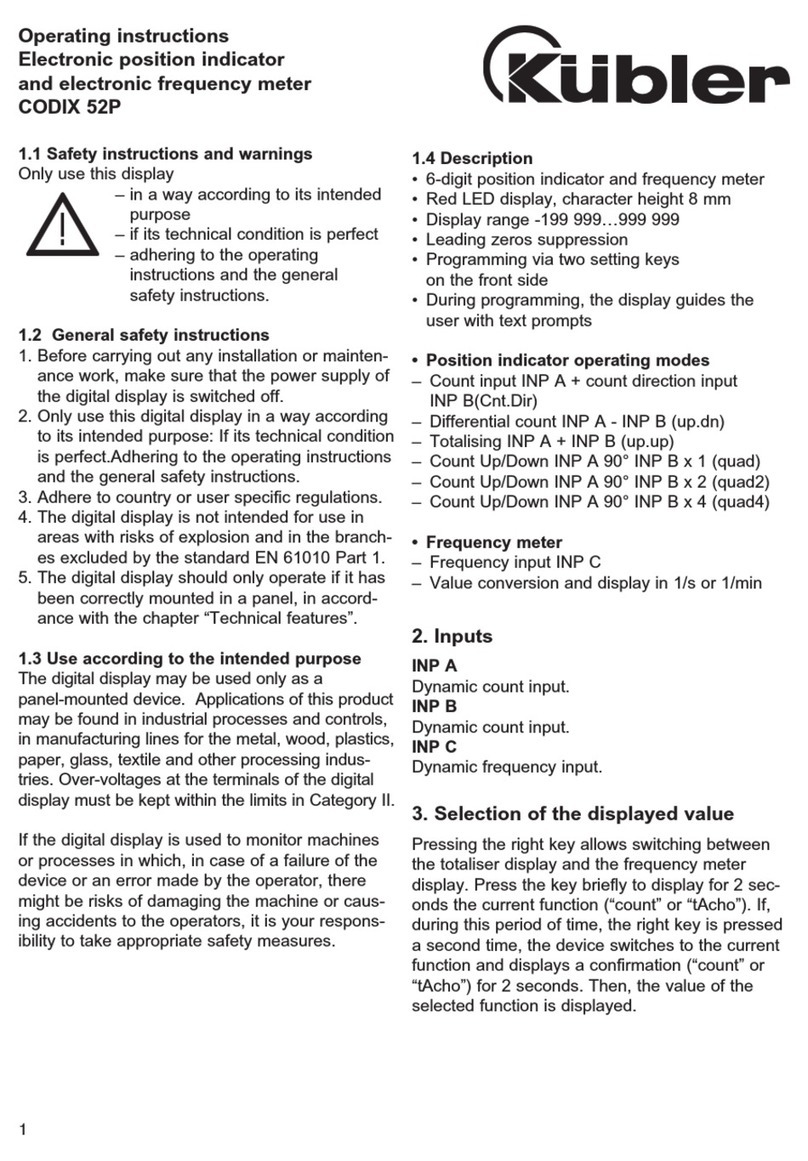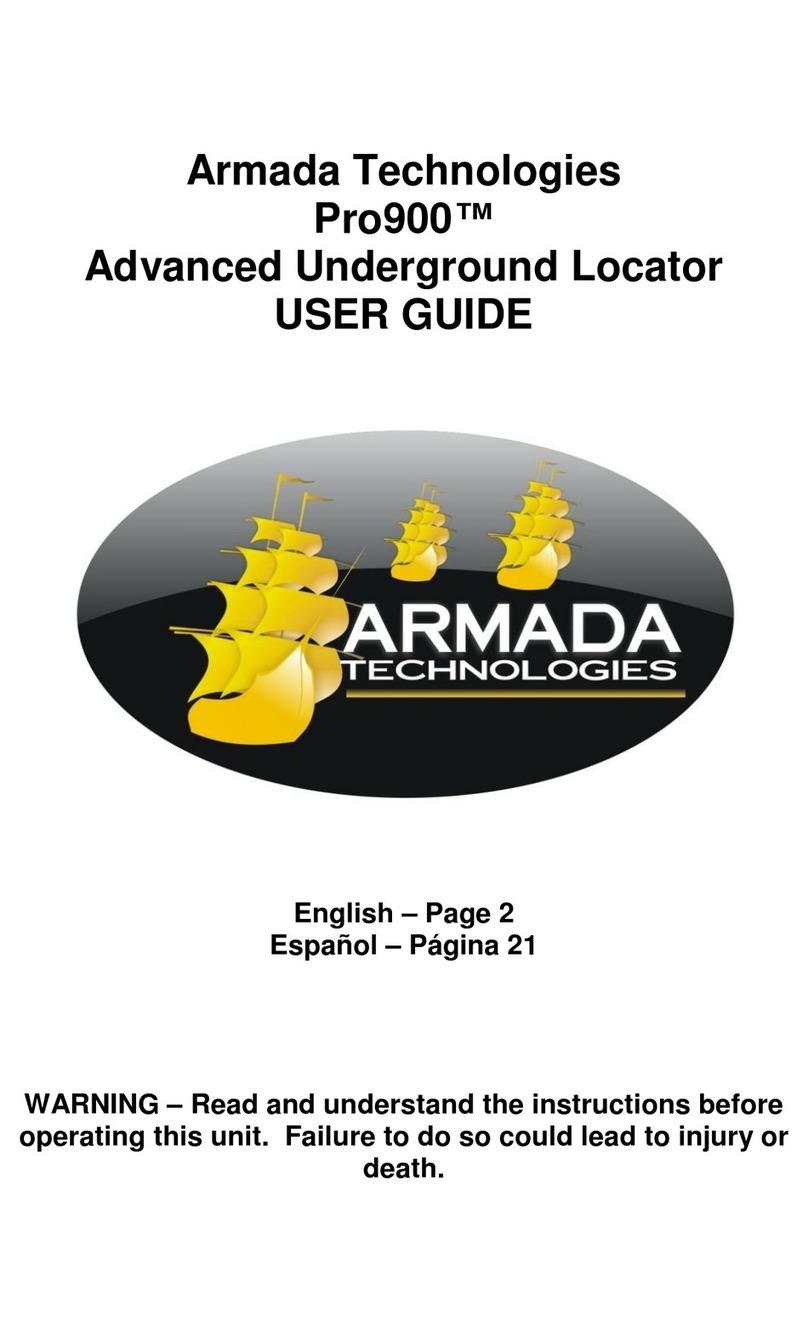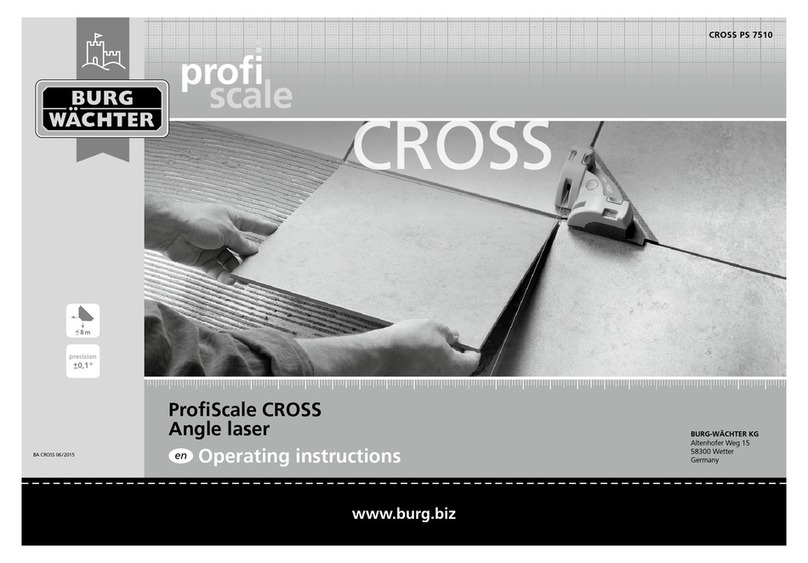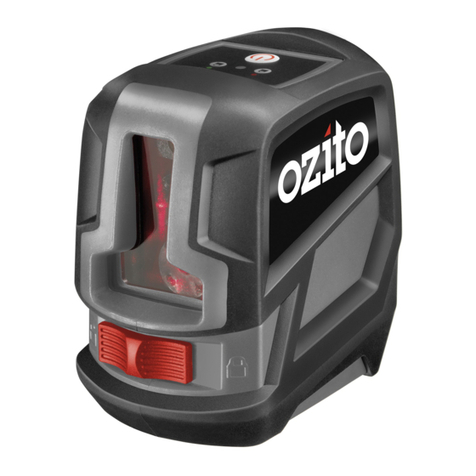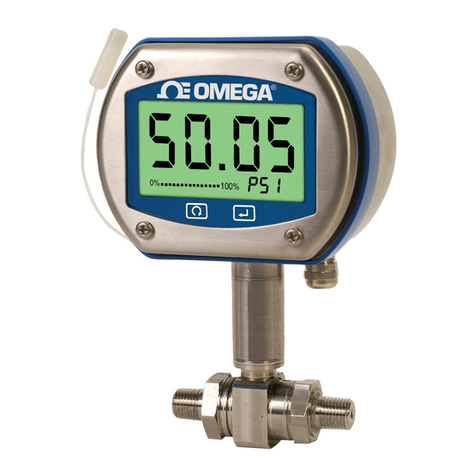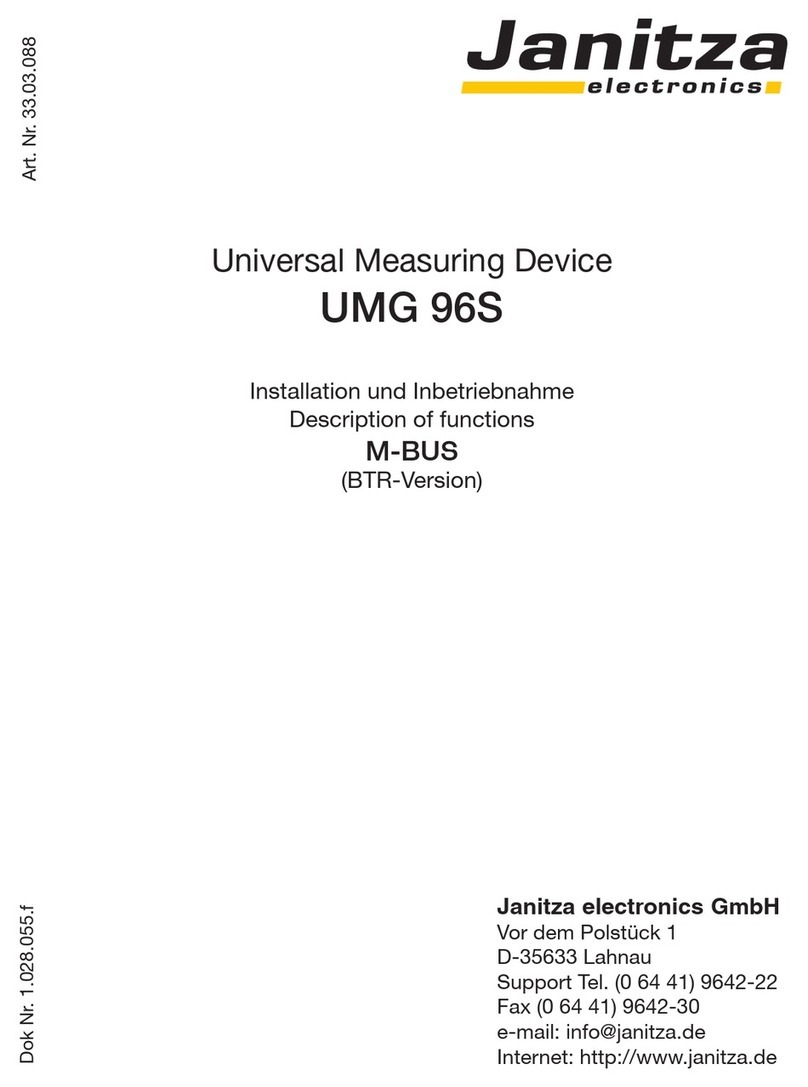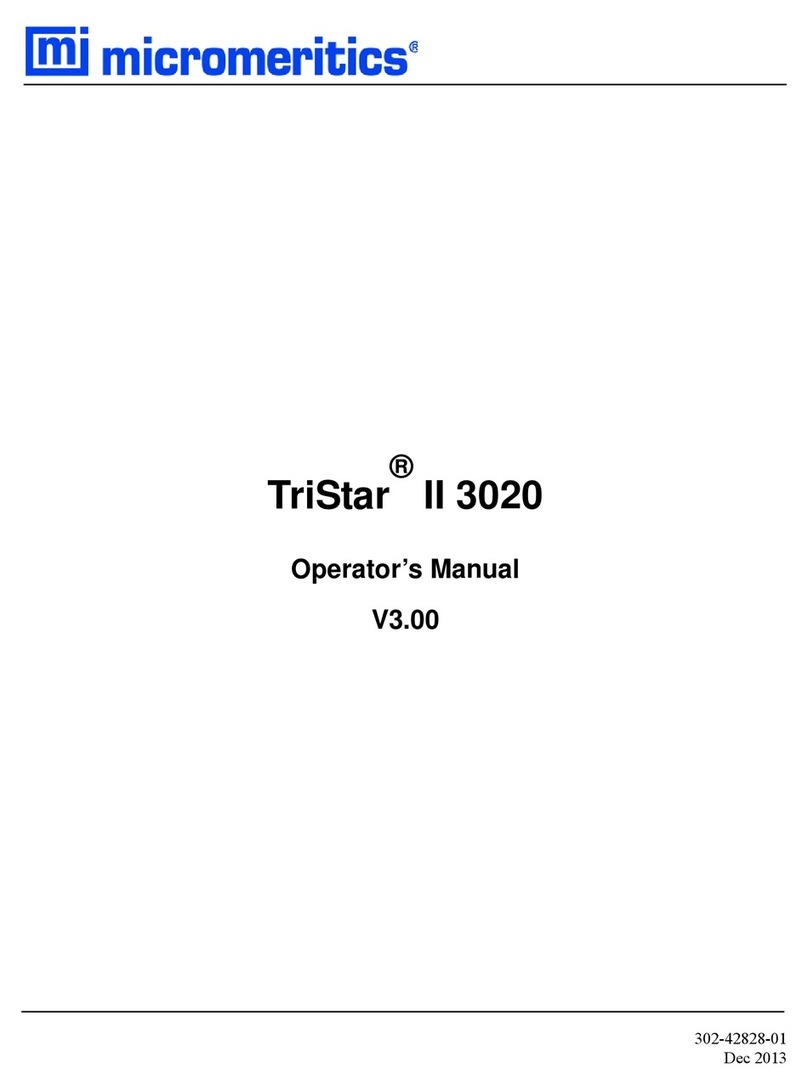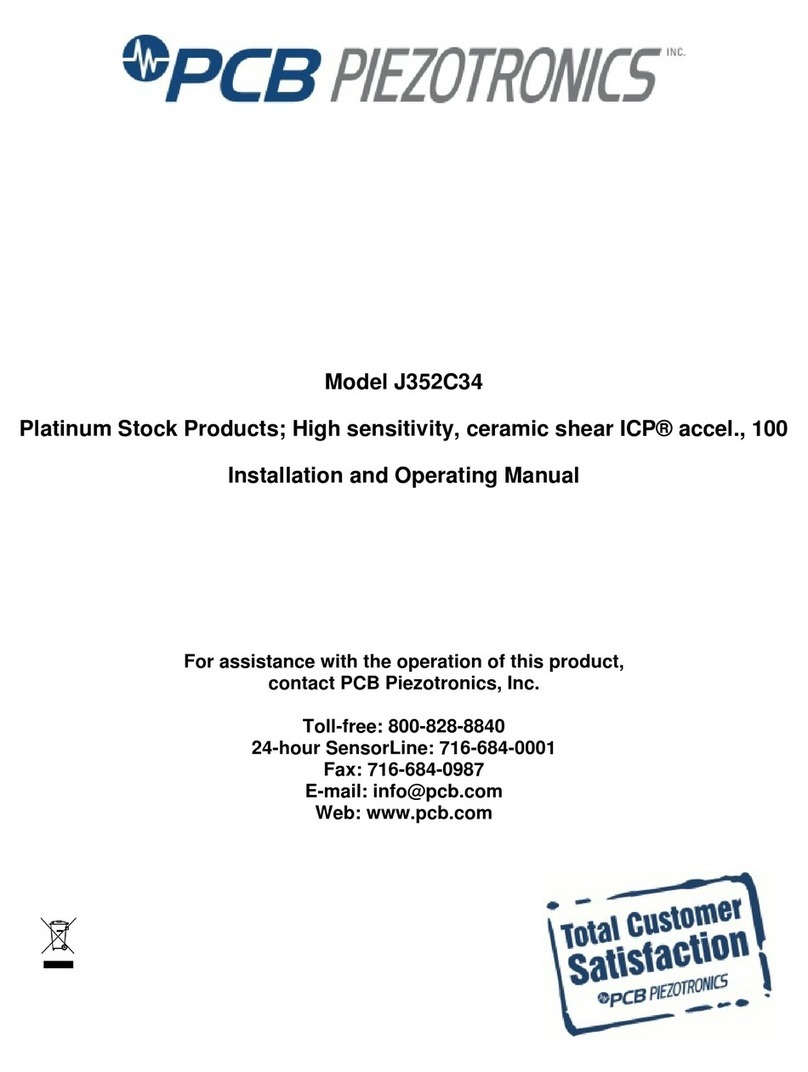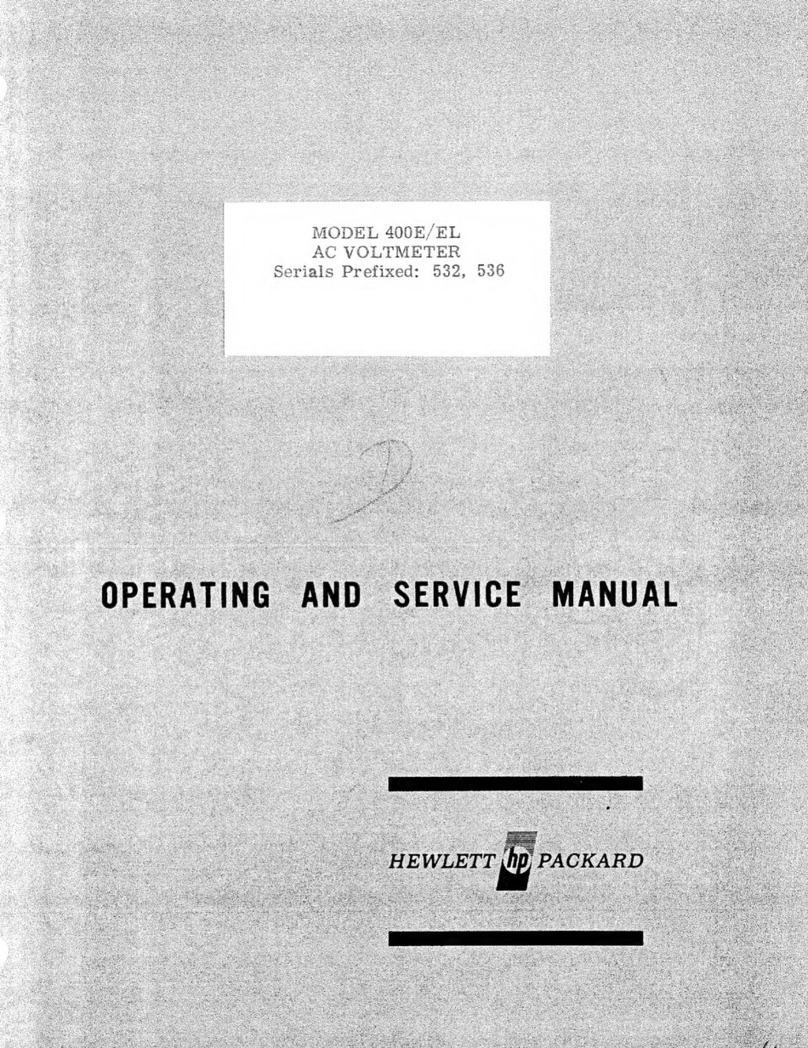TESTING 1.0235 User manual

TESTING Bluhm & Feuerherdt GmbH
Production and distribution of
construction-material testing devices
Motzener Str. 26b
DE-12277 Berlin
Tel. +49(0)30/710 96 45-0
Fax +49(0)30/710 96 45-98
www.testing.de
1
Operating Manual
Calorimeter
Heat of hydration of cement

Calorimeter
1.0235
2
Do not try to operate the device before reading and learning this manual in all its parts.
Contents Page no.:
1General information ...............................................................................................3
1.1 General features................................................................................................3
1.2 Identification......................................................................................................3
1.3 Applications.......................................................................................................3
1.4 Structure and operating of the device................................................................4
2Safety information..................................................................................................4
2.1 General safety standards..................................................................................4
2.2 Safety systems..................................................................................................5
2.3 Dangerous parts and residual risk.....................................................................6
3Installation ..............................................................................................................7
3.1 Lifting.................................................................................................................7
3.2 Unpacking.........................................................................................................7
3.3 Installation.........................................................................................................8
4Device feature.........................................................................................................8
4.1 Dimensions and mass of the appliance.............................................................8
5Devices....................................................................................................................9
5.1 Test start up....................................................................................................11
6Calorimeter calibration ........................................................................................11
7BECKMAN thermometer operation.....................................................................12
7.1 Compaction of Mercury...................................................................................13
7.2 Thermometer calibration .................................................................................14
7.3 Decommissioning............................................................................................14
8Maintenance..........................................................................................................14
8.1 Routine maintenance ......................................................................................14
8.2 Special maintenance.......................................................................................15
9After-sales service and spare parts....................................................................16
9.1 Date of issue of this Operating Manual ...........................................................16
9.2 Copyright.........................................................................................................16
9.3 Contact for help and spare parts.....................................................................16

Calorimeter
1.0235
3
1 General information
1.1 General features
This manual id addressed to the carrier, the installer, the user, the maintenance
operator, the scrapping operator.
Please read it carefully because it informs you about the operating of the device in
safety conditions.
This manual has to be considered apart of the product and concerns only the de-
vice it is delivered with.
Keep the manual in order during the whole life of the appliance to consult it for any
needs.
In case of sale, the manual and its enclosures should be given together with the
device.
The manufacturer assumes no liability for any damages caused by a misuse of the
device.
The manufacturer has the right to modify this technical literature as well as the
devices this refers to without any previous notice.
Messages meaning:
ATTENTION
It shows the procedures that can damage seriously the device if they
are not followed carefully.
DANGER
It shows the procedures that can be dangerous to the operator if they
are not followed carefully.
1.2 Identification
MANUFACTURER IDENTIFICATION: See the cover page
DEVICE IDENTIFICATION: See the plate on the device where the
complete identification data and the elec-
trical features are to be found.
1.3 Applications
The centrifuge extractor is use for the determination of the bitumen percentage container
in bituminous mixtures. It has been designed in two different models: the model is
equipped with a container having 1500 g capacity.
The same centrifuge extractor can be equipped with both the container (1500g or 300g).
This appliance is made for the aim, which it has been conceived for. Any other uses are
not allowed.

Calorimeter
1.0235
4
ATTENTION
The appliance is made to work only with non-flammable and non-ex-
plosion solvents.
The use of the appliance with materials and solvents that are flamma-
ble and/or explosion type is a source of danger and risk of fire or ex-
plosion.
The device can be used only and exclusively with non-flammable and
non-explosion solvents.
The manufacturer assumes no liability for any damages to people and
things due to a lack of observance of these instructions.
The instructions given in this operating manual are only made for the
right use of the
appliance.
To carry out the test in the right way, the user must refer to the spe-
cific standards in force for the test itself.
1.4 Structure and operating of the device
Two main parts compose the appliance:
An aluminium turning and removable container complete with a cover compose
the appliance. A paper filter ring is compressed between the container and the
cover through a knurled screw nut.
The switch board is composed by an electronic card that controls automatically the
acceleration of the speed from 0 to 3000 revolutions per minute and the time of
break that allows a rapid stop of the container at the end of the test.
If further information are required please get in touch with the distributor or the manufac-
turer.
2 Safety information
2.1 General safety standards
The use, lifting, installation, maintenance and scrapping of the device are allowed only to
qualified staff. Qualified staffs are composed by people who are authorised by the safety
responsible to do any activities due to their experience and acknowledgement of the op-
erating of the device and of the standards, rules and actions.
The user must be carefully taught about the operating of the device to avoid any misuse
of it and about the safety devices, which the device could be eventually equipped with.
The safety devices will have to be kept always assembled and to be daily checked.
The manufacturers ottertraining and assume no liability for any damages due toa misuse
of the device by an unskilled staff.
The manufacturer recommends following carefully the instructions and procedures of the
operating manual and the safety standards concerning the safety devices and the general
rules of the work environment.

Calorimeter
1.0235
5
Verify the accordance of the device to the standards in force in the State where the device
has to be installed.
The operating manual must be carefully read by the safety responsible, by the operators
and maintenance engineers. It must always be kept near the device in order to be able to
read it any times it will be necessary.
Any tampering or modifications of the device (electric, mechanical etc.) that are not al-
lowed by a written agreement of the manufacturer must be considered as not permitted
and the manufacturer will not accept to be charged for any damages.
The removal or the tampering of the safety devices will be an infringement to the EEC
Safety Standards. The manufacturer assumes no liability for any damages.
The device has to be installed in places safe from fire and explosions.
We do recommend using only original spare parts and accessories; on the contrary the
manufacturer assumes no liability.
Be careful that any dangerous situations won't happen during the working; stop immedi-
ately the device in the event that it will not work properly and ask the manufacturer or the
Authorised Service Staff of the dealer at once.
The manufacturer assumes no liability for any damages caused to people, things and
animals in case the general safety standards or if the instructions of this manual are not
followed.
2.2 Safety systems
MEANING: Safety devices are all the safety measures using specific technical equipment
(guards, cages etc.) to protect the operator from any danger that couldn't be avoided
when the appliance was planned.
DANGER
The removal of the safety devices or any tampering of the device could
cause risks to the operator or to any other people.
The manufacturer assumes no liability for any damages to people,
things or animals due to the tampering of the safety devices.
PASSIVE SAFETY DEVICES
All those devices avoiding or reducing the risks for the operators are passive safety de-
vices. These devices don't require any active and aware intervention to be operated. The
testing device is delivered in two different models:
The STANDARD model has no safety device or protection.
The EUROPEAN CE model has a safety micro switch that doesn't allow the work-
ing of the centrifuge extractor if the cover of the container has not been place and
properly closet. In case the container is turning (even slowly) the cover cannot be
taken away.
ACTIVE SAFETY DEVICE
All those devices avoiding or reducing the risks for the operators are active safety de-
vices. These devices require an active and aware intervention to be operated.

Calorimeter
1.0235
6
The switchboard has a main switch that can also be used as an emergency switch.
2.3 Dangerous parts and residual risk
The dangerous place is the space inside and around the device where the operator could
be wounded or damaged.
During same procedures the operator could face same risks of danger.
The risks can be eliminated following carefully the procedures written in this manual and
using suitable safety devices.
ATTENTION
In case the Manufacturer does not do the device installation, employ
only skilled operators particularly trained for the lifting of heavy device
.
GENERAL INFO
Before starting the standard use of the equipment, ensure that all the components
are in good working conditions check there are no defective or damaged parts. If
necessary repair or replace any damaged part.
Pay attention to the risk of electric shocks both for direct or indirect contact, due to
unforeseen failure to the electric system.
Do not subject the equipment to violent shocks.
Do not expose the equipment to fire, extreme temperature or weld splatters.
Avoid corrosive substances to Game in touch with the equipment.
Never wash the appliance using water sprays.
DURING THE USE
In order to grant the max. safety levels for the operator, it is recommended not to
touch any moving components during the test execution and always use the proper
safety means.
During the test execution always pay attention to the possibility of hands, fingers
or body squeezing, cutting or trapping caused by the moving parts of the container.
The products tested could be a risk for the operator health. As a caution do not
breath steams and do not let the products be in touch with the eyes and the skin.
Do not wear large clothes, ties, watches, rings or others, which could entangle into
the moving parts of the appliance.
LIFTING
During the lifting take care that the device is conveniently held and secured and
that it cannot slide.
Do not stand in a direct line with the application of force. Do not allow people en-
trance under loads that are no conveniently supported by mechanical means.

Calorimeter
1.0235
7
RISK OR DANGER
FORESEEN SAFETY MEASURE
finger or hands squeeze
reinforced gloves
abrasions - cuttings
reinforced gloves
steam ejections
overalls and gloves
The manufacturer assumes no liability for any damages to people and things due to a
lack of observance of the instructions and the use of the safety devices. (See laws a
against the accidents in force )
3 Installation
DANGER
Consult DANGEROUS PARTS AND RESIDUAL RISKS before pro-
ceeding
3.1 Lifting
The operating instructions must be respected during the moving of the appliance and
particularly in the following phases:
The lifting and the storing
The first installation
The further installations
The device is usually packed in a wooden case or in a carton that allow the easy moving
of the same.
The device must be moved by a forklift truck suitable for the weight indicated on the plate
on the device.
The moving of cases with lifting devices must be made with all cautions required and
following the indications given on the packing. Never use chains to lift the cases.
ATTENTION
Pay attention to avoid impacts and turnovers
Protect the device from the atmospheric agents. Water and humidity
could oxidise it, damaging it seriously.
3.2 Unpacking
After removing the package, check that any parts of the device are not damaged. In case
of doubt, DO NOT USE THE DEVICE and ask the manufacturer.

Calorimeter
1.0235
8
DANGER
The materials used for the package (plastic, polystyrene, screws, nails,
wood etc.) have tobe keptfar from children.They must be thrown away
in a proper collection centre.
ATTENTION
Pay attention to avoid impacts and turnovers.
Before throwing away the package, pay attention that any accessory,
manuals, documents, s are arts are not inside.
3.3 Installation
The device has to be placed in an environment suitable for the aim it has been conceived
for (Iaboratory protected by any atmospheric agents). Skilled operator must do the instal-
lation.
ALLOWED TEMPERATURE
from + 5°C to + 40°C
ALLOWED HUMIDITY
from 30% to 75%
O.S.L. MAXIMUM HEIGHT
1000 m
GENERAL RECOMMENDATIONS
The device must be installed so that it is free from each side in order to be able
to carry out easily the maintenance operations
No authorised people and no dangerous objects must be near the device.
The device must be placed on a desk in order to be able to work at a proper
height for the user.
The device must be placed in a place properly aired in order not to accumulate
any noxious gas.
4 Device feature
4.1 Dimensions and mass of the appliance
LENGTH
250 mm
WIDTH
350 mm
HEIGHT
680 mm
WEIGHT
12 kg

Calorimeter
1.0235
9
5 Devices
Calorimeter
The suitable calorimeter is composed as follows (see the enclosure hereto attached):
a) - Container of dissolution, composed of: an insulated flask (1) (i.e. Dewar flask)
placed in a thermo - insulated case (2) inside a container (3) of isolated material (i.e.
wood, plastic) or submerged in a thermostatic bath regulated at: ± 0.2°C;
- an insulating cap (4) (i.e. cork or plastic) with holes suitable for the location of the ther-
mometer ( 5), the stirrer and the funnel (7) used to put the specimen into the case (2).
The calorimeter's insulation (9) must ensure that the coefficient of thermal loses k (de-
termined in accordance with the instructions at point 6.3) is smaller of 0,06 Kelvin for 15
minutes for each Kelvin degree above the environment temperature.
Accessories not supplied with the equipment but necessary for the performance of the
test.
Glass stirrer (6)
Thermometer (5): it could be a Beckman thermometer or a digital model.

Calorimeter
1.0235
10
LEGEND:
1- Dewar flask 6- Stirrer, an accessory not supplied with the equipment
2- Case 7- Funnel
3- Container 8- Support
4- Cap 9- Insulating material
5- Beckman thermometer or digital thermometer, an accessory not supplied with the
equipment
10- Stirrer engine
We recommend to check the complete centering of the stirrer (6) with the hole of
the cap (4) in order to avoid any forces on the sides of the Dewar flask (1) that may
cause its breaking.
Insert the thermometer (5) and check that it doesn't get in contact with the stirrer
(6) into the flask (1).
Put the tunnel (7) with its relevant rubber Gap into the third hole placed on the cork
cap (4), then check that the tunnel doesn't get in contact with the stirrer (6) into the
flask (1).
Now it is possible to start the test by acting on the on-off switch.
At the end of the test disassemble the equipment by following the same operations
in reverse order.

Calorimeter
1.0235
11
5.1 Test start up
ATTENTION
We recommend , protecting the glass parts placed inside the dewar
vessel (stirrere and funnel), from possible corrosion caused by the
acidic solution , covering those parts with a protective film of grease
or Vaseline oil
Extract the Dewar flask (1) and fill it with the prescribed quantity of acid mixture.
Put the flask into the case (2)
Close the flask (1) with the insulating cap (4) including the stirrer (6).
Fix the stirrer on the engine
1. Fix the suitable rubber tube on the drive shaft
2. Insert the stirrer (6) into the other edge of the rubber tube until it gets
in contact with the drive shaft.
3. Put the appropriated metallic additional support on the rubber tube,
then fix a metallic clamp on the additional support in order to block off all
parts.
6 Calorimeter calibration
General features
The calorimeter's calibration is done in order to determine the termic capacity and the
coefficient of thermical loses. These characteristics are determined through zinc oxid cal-
cined dissolution in the acid mixture and by measuring calorimeter's temperatures with
prefixed range.
The acid mixture temperature must be planed so that after the dissolution reaction, the
calorimeter's temperature is at least 0,5°C below the ambient's temperature. When it's
used a bath of water, the bath's temperature is considered like the calorimeter's ambient
temperature.
Procedure
Measure a quantity of acid mixture in mass or volume, at ±0.2% so that the liquid's level
is about 2 cm below the calorimeter's cover. Introduce the acid mixture in the fIask. Just
before the determination of thermic capacity, to lime zinc oxide at (950 ± 25) °C for 5 min
maximum, then let it chill in a desiccator until the ambient temperature is reached.
The zinc oxide quantity to use, weighed at ±0,0001g is requested in order to satisfy the
following equation:
Acid mixture mass/zinc oxide 's mass = 60±1
Perform the following procedure:
1- preliminary period
Mix the acid mixture for a period between 40 and 50 min.

Calorimeter
1.0235
12
2- pre period
When the speed's increase is constant, start to count times using a chronometer and
register the starting temperature T -15.
3- Specimen's introduction
Register the temperature after 15 min, T0, and immediately add the zinc oxid specimens
to the acid mixture, not using more than one min time.
4- dissolution period
Mix the mixture for 30 min, afterward the dissolution is considered complete, then register
the temperature T30.
Register the ambient temperature, Ta. If the difference between Taand T30 is lower than
0,5 °C, repeat the test.
5- Following post period
Register the final temperature T45 after other 15 min
In order to reduce reading mistakes, determine the temperatures T-15 T30 and T45 as a
result of five different readings registered with one minute break in the period of time of
two min before and two min after the established time, Ti( i.e. T1-2, Ti-1, T1, Ti+2 ). Deter-
mine the value of T0extrapolating the temperature's function respect at the break time
between T- 4 and T-15 . If the value extrapolated is different from the reading T0with the
value extrapolated.
If more than one zinc oxide trace is found on the funnel's point and on the cover when the
calorimeter is opened, repeat the calibration.
Note: The temperature's lectures begin17 min before introducing specimens of zinc oxide
and the last reading will be 47 min after its introduction. The total calibration duration is
64 min.
7 BECKMAN thermometer operation
A Beckman thermometer is a differential thermometer displaying a temperature change
in a range comprised in the absolute range of the thermometer itself.
It is important to point out that the Beckman thermometer does not display an absolute
temperature but only a variation in comparison to a reference value. This value must be
defined by using a reference thermometer that will also be used to calibrate the Beckman
thermometer.
The Beckman thermometer must be set-up and calibrated each time we change the ref-
erence temperature tram which a variation must be measured.
The thermometer is composed of the following main parts:
Bulb
Differential range
Absolute range

Calorimeter
1.0235
13
Reservoir-coil
Bulb (A) allows to detect a temperature .
Differential range (B) allows to read the temperature change detected by the bulb
Absolute range (C) allows to read the reference temperature at which the thermometer
has been calibrated
Reservoir-coil (D) contains, after the calibration, the mercury exceeding the reference
point
Before using the Beckman thermometer, the mercury must be correctly compacted and
the thermometer calibrated.
7.1 Compaction of Mercury
The thermometer must be set-up so that the mercury is positioned as per Pic. 1
The mercury must be as shown (in the capillary), must be continuous from the bulb to the
reservoir-coil and must not present interruptions
Very likely a brand new thermometer will be received with a different mercury position,
therefore the first operation to carry out is to compact mercury and restore its cohesion.
A right position-cohesion can be found only through a correct and careful manipulation of
the thermometer, this operation requires patience and same experience and familiarity
with this product typology.
We must tilt the thermometer to let the mercury reach the above mentioned correct posi-
tion by gravity. This operation may require more than one trial, considering that the gravity
may also cause interruptions of the mercury's cohesion in the capillary.
Interruptions in the mercury cohesion do not mean that the thermometer is damaged,
since mercury is contained in a vacuum capillary; a correct cohesion will be obtained
through a patient a accurate manipulation.
We recommend the following procedure:
1) Position the thermometer vertically with the bulb on top (Pic. A), so that the mercury
leaves the bulb, goes through the capillary and reaches the rest of the mercury con-
tained in the reservoir-coil
2) Leave the thermometer in this position until the mercury has achieved a complete co-
hesion through the capillary and up to the reservoir-coil
3) Slowly rotate thermometer to a tilted position with the bulb downwards (Pic. B) an
place it in a firm position on a support. In such a position the mercury will flow down by
gravity from the reservoir-coil to achieve a correct positioning as per Pic. 1
In such a position the mercury in the reservoir-coil will display the current temperature
detected by the bulb, in comparison with the absolute range.
Remark
If, during the above described sequence, the mercury loses cohesion
in the capillary, you will need to repeat the operation until the expected
cohesion result is achieved.

Calorimeter
1.0235
14
7.2 Thermometer calibration
To set the mercury in the right way and allow the thermometer to measure and display
the temperature change, in comparison with the reference temperature, we recommend
proceeding this way:
1) Supply to the bulb with a temperature of 2 - 3°C higher than the reference temperature
from which the variation must be measured
To do this and to measure temperature you need a good precision referencethermometer
2) Let temperature settle so that the exceeding mercury flows up to the reservoir-coil
3) Supply the bulb with the reference temperature (still measured using the precision
thermometer) from which the variation will then be measured. In this way the mercury in
the capillary will abandon the reservoir-coil, flowing down to the differential range
4) Mark the correct position of the mercury in the capillary in comparison with the differ-
ential range. This position corresponds to the temperature measured by the reference
thermometer All variations read on the differential range correspond to a temperature
change of the bulb
7.3 Decommissioning
Should it be decided that the machine is to be no Ionger used so dispose of according to
the standards in force.
8 Maintenance
DANGER
Consult DANGEROUS PARTS AND RESIDUAL RISKS" before pro-
ceeding
All the maintenance operations must be carried out with the device
turned off and unplugged from the knife switch.
Skilled operators instructed about the purposes the device is made for
must carry any kind of maintenance operations concerning the com-
ponents of the device and of the electric components, even those that
ma seem very simple.
Only original spare parts are allowed. The Manufacturer assumes no
liability in the event that non - original parts are used.
8.1 Routine maintenance
In order to maintain good working of the device for a long time, clean periodically all the
parts and oil the parts that are not painted.

Calorimeter
1.0235
15
Do not use solvents, which may damage the painting and the parts made of synthetic
materials.
After each test check that all the parts of the appliance are not damaged. In case some-
thing is damaged get in touch with the After Sales Service.
Ensure that all procedures described in the Chapter "PERIODICAL INSPECTIONS" and
"PERIODICAL OPERATIONS" are correctly and punctually executed. This care will help
preventing failures and dysfunctions.
8.2 Special maintenance
In case of special maintenance operations (repairs, replacement of parts and any other
operation not described in this manual) ask directly to the manufacturer.
Recycling notice for the disposal of electrical and electronical devices.
A symbol, placed on the device or on the package and/or on the documentation, suggest
that the device shouldn't be dispose together with other home garbage at the end of its
life cycle.
To avoid further environment, or health-care damages, caused by the unsuitable disposal
of garbage, we kindly recommend the user to separate this device from other different
types of garbages and to recycle it in a responsible way to avoid the arguable reuse of
material resources. Indeed users must take care at the disposal of the equipment that
have to be discarded, taking them away to the next recycling site for the appropriate re-
cycling treatment for electrical and electronical devices. Gathering and Recycling deplete
devices allow the preservation of natural resources and grant for them the adequate treat-
ment respecting health and environment.
For further information about your local recycling site please contact your local city hall or
city waste treatment department. The developer, as producer of electrical and electronical
devices, will provide to finance the recycling and treatment services for deplete devices
that will come back through these recycling site, accordingly the local statement.

Calorimeter
1.0235
16
9 After-sales service and spare parts
A great deal of care has been taken to ensure that this Operating Manual is correct. We
cannot, however, guarantee that it is without mistakes or errors, or that all information
contained herein will continue to remain valid in the event of technical changes.
9.1 Date of issue of this Operating Manual
Edition no. 4
Date of issue: September of 2018
9.2 Copyright
The copyright to this Operating Manual remains with the company
TESTING Bluhm & Feuerherdt GmbH.
This Operating Manual is intended only for the Operator, the User, and his staff. The
information in this Operating Manual may not be:
•Reproduced, or
•Distributed, or
•Provided to any other persons.
Any person acting in violation of the above stipulations may be prosecuted before a
court of law.
9.3 Contact for help and spare parts
If you have any technical questions, or if you require spare parts, please get directly in
touch with the following address:
TESTING Bluhm & Feuerherdt GmbH
Motzener Str. 26b
DE –12277 Berlin
Germany
Tel. +49 30 (0) 710 96 45-0
Fax: +49 30 (0) 710 96 45-98
www.testing.de

Calorimeter
1.0235
17
Legend:
1 Flask
2 Container
3 Container
4 Cork
5 Thermometer
6 Stirrer
7 Funnel
8 Support
9 Insolating material
10 Stirer’s motor

Calorimeter
1.0235
18
In copy
EC Declaration of Conformity in accordance with the Machinery Directive
2006/42/EC Appendix II 1.A
The authorised representative established in the community,
Mr. Feuerherdt
hereby declares that the following product
Manufacturer: TESTING Bluhm & Feuerherdt GmbH
Motzener Str. 26b
12277 Berlin
Product designation: 1.0235
Serial number: continuous
Serial/Type designation: Calorimeter
complies with all of therelevant provisions of the above namedguidelines aswell as theadditional
applied guidelines (following) - including any of the amendments thereto which are in force at the
time of the declaration.
The following additional EU Directives have been applied:
Low Voltage Directive 2014/35/EC
electromagnetic compatibility –2014/30/EE
The following harmonised standards have been applied:
DIN EN 60204-1 The Safety of Machines - Electrical Equipment of Machines - Part
1: General Requirements (corrigendum 2010)
The name and address of the person who has been authorised to compile the technical docu-
mentation:
Mr. Metge
Location: Berlin
Date: 28/02/2014
_______________________________ _______________________________
(Signature) (Signature)
Managing Director Technician
Table of contents
Other TESTING Measuring Instrument manuals
